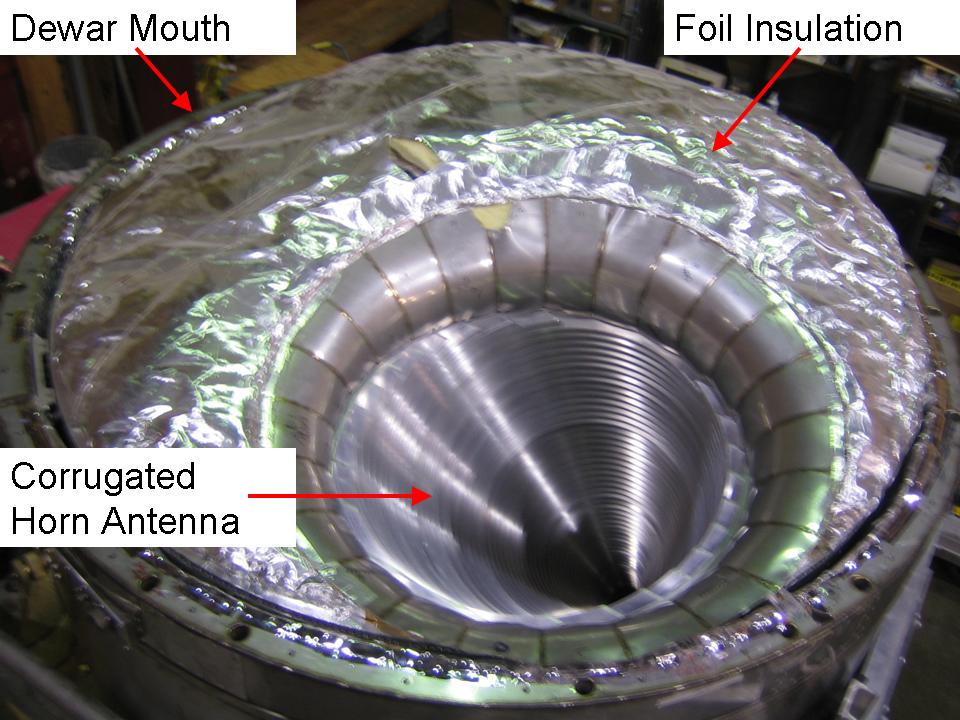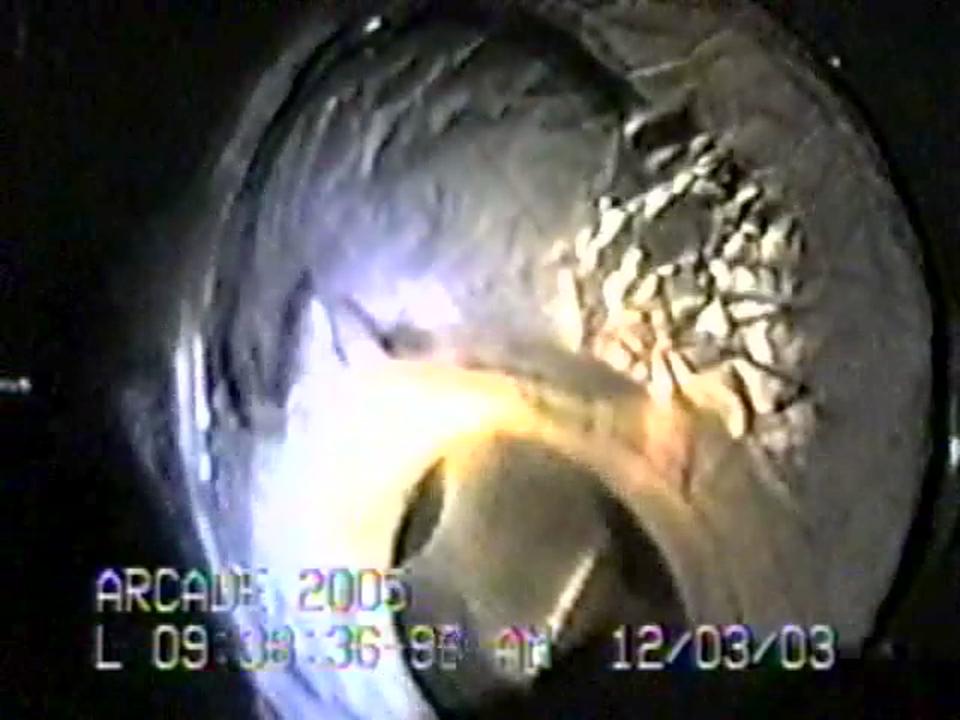 |
 |
Video Footage From 2006 Flight
The 2006 payload included a video camera
so we could check the cryogenic antennas
for evidence of icing during flight.
A protective lid covers the instrument
to protect the cold optics during lauyynch and ascent.
Once at the float altitude of 37 km (120,000 feet),
we open the lid so the antennas can view deep space.
Liquid helium cools the antennas to a few degrees above absolute zero --
cold enough that air will freeze solid.
The instrument design
channels cold helium gas from the main helium tank
to prevent air from freezing onto the antennas.

Frozen Air, Open Aperture
The image above was taken on the ground prior to flight
It shows the dewar mouth
from the approximate vantage point of the video camera,
mounted above the dewar and off to one side.
The sky port is oriented
to allow one cluster of antennas to view the sky.

The
video clip
above shows the payload as the
carousel moves the sky port
from the large 3 GHz antenna
to a second position
over the smaller 5 and 8 GHz antennas.
The "steam" coming from the dewar
is solid nitrogen condensation from the nearby atmosphere.
It's the same idea as "seeing your breath"
on a cold winter morning,
but here we're not seeing water vapor condensing --
it's the nitrogen in the air itself!
Note that the condensing nitrogen flows away
from the sky port and the antenna.
By design, the dewar cranks out over 5 cubic meters of helium gas per second
throughout the flight.
This outflow of cold gas keeps unwanted condensation
away from the critical antenna opening.
If you look carefully at the outer edges of the frame,
you can see city lights on the ground below.
The payload slowly spins counter-clockwise,
so the lights appear to move in a clockwise direction.
A Wild Ride

The second
video clip
shows the payload tumbling
as it is cut down from the balloon
to begin its descent to the ground some 120,000 feet below.
The camera is looking down at the protective lid
which now covers the antennas.
A slight jolt
signifies that a set of explosive bolts have fired
to cut the payload from the balloon above.
The payload and attached camera free-fall for a few seconds,
until the parachute suddenly opens.
Talk about a wild ride!
|
|


